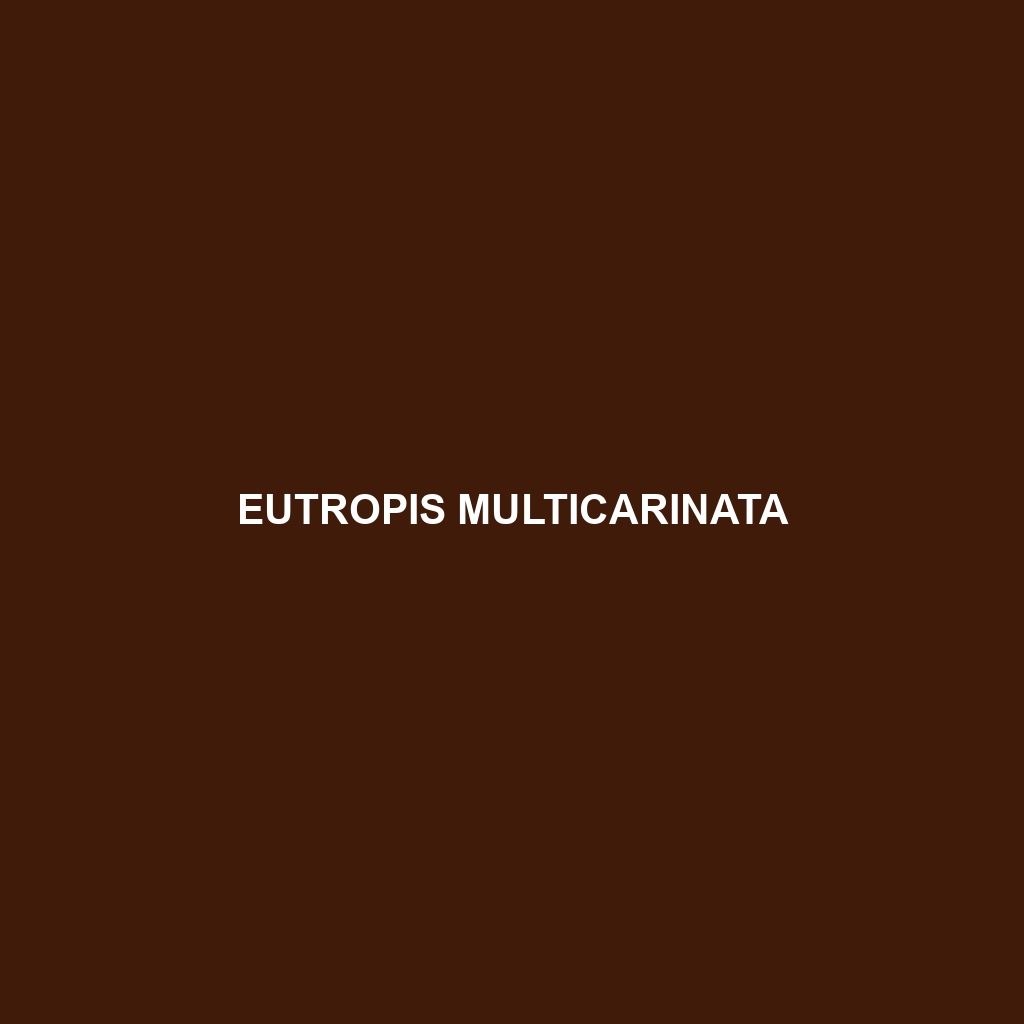<p><b>Eutropis multicarinata</b>, commonly known as the many-lined skink, is a diurnal lizard native to Southeast Asia, characterized by its sleek body measuring 15-30 cm with distinctive light stripes. This adaptable omnivore thrives in diverse habitats, playing a crucial role in local ecosystems by controlling insect populations and serving as prey for larger predators.</p>
Tag: skinks
Eulamprus tympanum
The Eulamprus tympanum, or Eastern Water Skink, is a medium-sized, diurnal skink known for its remarkable swimming ability and adaptability to various habitats, including temperate forests and riparian zones in southeastern Australia. This insectivorous species exhibits unique courtship behaviors during breeding and plays a vital role in maintaining ecological balance as both predator and prey.
Eugongylus rufescens
Common Name Eugongylus rufescens Scientific Name Eugongylus rufescens Habitat Eugongylus rufescens, commonly known as the African Giant Skink, primarily inhabits tropical rainforests and savannas across various regions in sub-Saharan Africa, particularly in countries like Cameroon, Gabon, and the Republic of Congo. These moderate to humid environments provide the ideal microhabitats for this species, characterized by […]
Enyalioides laticeps
<p><b>Enyalioides laticeps</b>, or the broad-headed skink, is a vibrant lizard native to the tropical rainforests of Central and South America, known for its distinctive coloration, flattened body, and role as an insectivore in maintaining ecological balance. These diurnal reptiles exhibit fascinating social behaviors and unique adaptations, making them an integral part of their rainforest ecosystem.</p>
Emoia sanfordi
<p><b>Emoia sanfordi</b>, or Sanford's skink, is a tropical species native to the South Pacific islands, characterized by its slender body, smooth scales, and ability to regenerate its tail. Primarily insectivorous, these skinks thrive in diverse habitats like rainforests and sandy beaches, playing a crucial role in maintaining ecological balance.</p>
Emoia paniai
Introducing the Pania Emoia (Emoia paniai), a striking medium-sized skink native to the rainforests of Papua New Guinea, known for its vibrant colors and adaptability. This insectivorous species plays a vital role in its ecosystem, maintaining insect populations while thriving in both disturbed and undisturbed habitats.
Emoia irianensis
Discover the Emoia irianensis, commonly known as the Irian skink, a vibrant insectivorous reptile native to the rainforests of New Guinea, featuring smooth, iridescent scales, large eyes for nocturnal vision, and remarkable adaptability to various habitats. This fascinating skink plays a vital ecological role by controlling insect populations and serves as an important bioindicator of environmental health.
Egernia douglasi
Discover the Douglas' Skink (<i>Egernia douglasi</i>), a medium-sized skink from southeastern Australia, characterized by its smooth scales, diurnal behavior, and insectivorous diet. This viviparous species plays a crucial role in pest control and contributes to ecosystem health by maintaining insect populations and promoting soil vitality.
Dibamus novaeguineae
fascinating Dibamus novaeguineae, or New Guinea legless skink, a fossorial lizard known for its elongated, limb-less body and vibrant color patterns. Found in the tropical forests of New Guinea, it plays a vital role in controlling insect populations while facing threats from habitat loss.
Ctenotus vagus
Discover the Ctenotus vagus, a slender skink from southeastern Australia, thriving in arid regions with a diet primarily consisting of insects. This diurnal species displays agility and unique social behaviors, playing a vital role in controlling insect populations and maintaining ecological balance.









